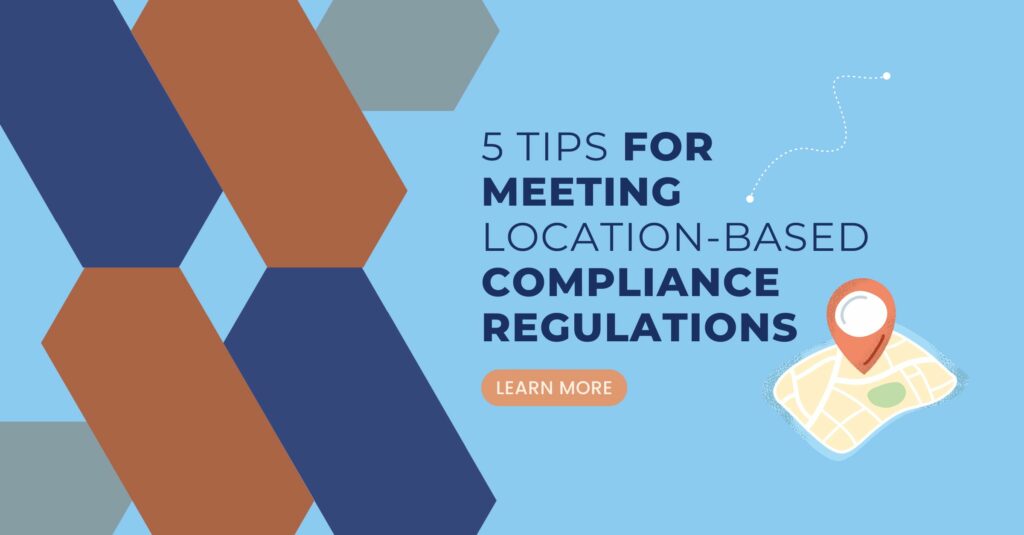
Meeting regulatory requirements and compliance standards is vital for pharmaceutical companies. Not only can non-compliance be catastrophic to patient health and safety, but it can also lead to lawsuits, reputational damage, and significant financial losses for the company.
Therefore, pharmaceutical industry executives must possess an intimate understanding of industry-specific regulations and the ability to adhere to them in the regions where their products are sold.
The challenge? Regulations are constantly evolving, and the legal requirements vary depending on the country of operation, the products manufactured, and the intended markets. This blog post explores the top 5 tips for ensuring compliance with location-based regulations across the pharmaceutical industry.
#5) Stay Up to Date with Current Regulations
Regulatory bodies such as the US Food and Drug Administration (FDA) and the European Medicines Agency (EMA) issue strict regulatory requirements and compliance standards for the pharmaceutical industry. These regulations are constantly evolving to ensure patient safety, keep pace with scientific advancements, and respond to public health emergencies.
To ensure consistent compliance with these regulations across locations, pharmaceutical companies need to establish a system to stay informed of the latest regulatory changes.
For example, company executives and other decision-makers can subscribe to email updates from regulatory authorities, participate in industry forums, and attend relevant seminars or webinars. As more complicated regulatory changes come about, leaders can collaborate with regulatory consultants, if necessary, to help interpret new regulations and implement them across market operations.
#4) Develop Standard Operating Procedures (SOPs)
Standard Operating Procedures (SOPs) provide a detailed, step-by-step guide on how to handle changes in industry standards and regulations. In the pharmaceutical industry, SOPs can cover a wide range of processes, from drug formulation and production to quality control and distribution. Developing comprehensive and clear SOPs not only ensures adherence to regulatory requirements but also promotes consistency and efficiency in operations.
#3) Implement tools to support Change Management
As local regulations change, pharmaceutical companies must update drug labels and other documents often to maintain compliance and patient safety. Change management and change bundling capabilities native to some AI-enabled tools allow labels and other documents to be updated at the source, eliminating human error associated with making updates across multiple versions as regulatory changes occur.
These tools can overlay existing content technology systems to harmonize meta-data properties and attributes and store them as modular components, allowing content authoring teams to update and review specific parts of a document without directly editing the entire thing, which might result in additional errors (i.e., typos, accidental deletions).
Additionally, when documents are updated at the source, AI-powered tools can provide a trigger that will inform and prompt the end user of the source data change and recommend the next best action (i.e., which document to apply the update to next) so no critical updates are missed. Further, audit trail functionality, including approvals and e-signatures, within these tools can help internal content development teams and regulatory affairs professionals alike to understand how and why a label was rendered over time and quickly correct errors as they are identified.
#2) Leverage Generative AI to Improve Product Labels
Generative AI can also help pharmaceutical companies transform technical scientific language into sentences and sections that are simple, clear, concise, and compliant for patient-facing documentation.
To do this, Generative AI tools use natural language capabilities to classify the language from CCDS, extract meaning from it to learn the content and context, predict the appropriate sentence structure depending on the desired local label geography, and then transform the data into multiple sentence options that are appropriate for any given local label output.
These options provide guidelines for improvement and standardization, which are then reviewed and approved by a “human in the loop” who understands culture, context, and compliance and can ensure labels meet current evolving cultural and health authority requirements in each of the local label geographies. Broadly speaking, this enables content authors to develop label language that is familiar to patients in the given geography, increasing health authority compliance and patient safety.
#1) Integrate with an industry-trained solution
For pharmaceutical companies seeking to improve their ability to meet changing regulatory requirements quickly, ComplianceAuthor AI’s unique combination of natural language AI models, structured content authoring software with integrated health authority outputs, and human experts provides a powerful, trend-riding solution.
For example, ComplianceAuthor AI automates the most error-prone steps in the content authoring workflow using natural language processing (NLP) and generation (NLG) models that have been extensively trained on life sciences data.
Because many of the tasks that are characteristic of pharmaceutical content development processes are repetitive in nature and subject to rigid procedures optimizing efficiency and productivity, AI tends to perform more accurately, and with fewer overall transposition errors, than traditional labeling teams.
Further, AI-powered structured content can help ensure sustained compliance; through crawling existing data repositories and RIM systems using natural language processing, ComplianceAuthor AI can continuously find, index, and sustain compliance while generating the next best action. Full audit trail capabilities contained within these tools also allow for the tracking and efficient incorporation of health authority feedback.
Conclusion
In summary, prioritizing adherence to location-based compliance regulations not only safeguards patient well-being and mitigates legal and financial risks but also fosters a culture of excellence and trust within pharmaceutical organizations. By adopting a proactive stance and embracing innovative solutions, companies can not only navigate regulatory complexities effectively but also position themselves as leaders in delivering safe and effective healthcare solutions globally.
Want to enhance your team’s capabilities with an AI assistant? Contact Glemser today to get started.


